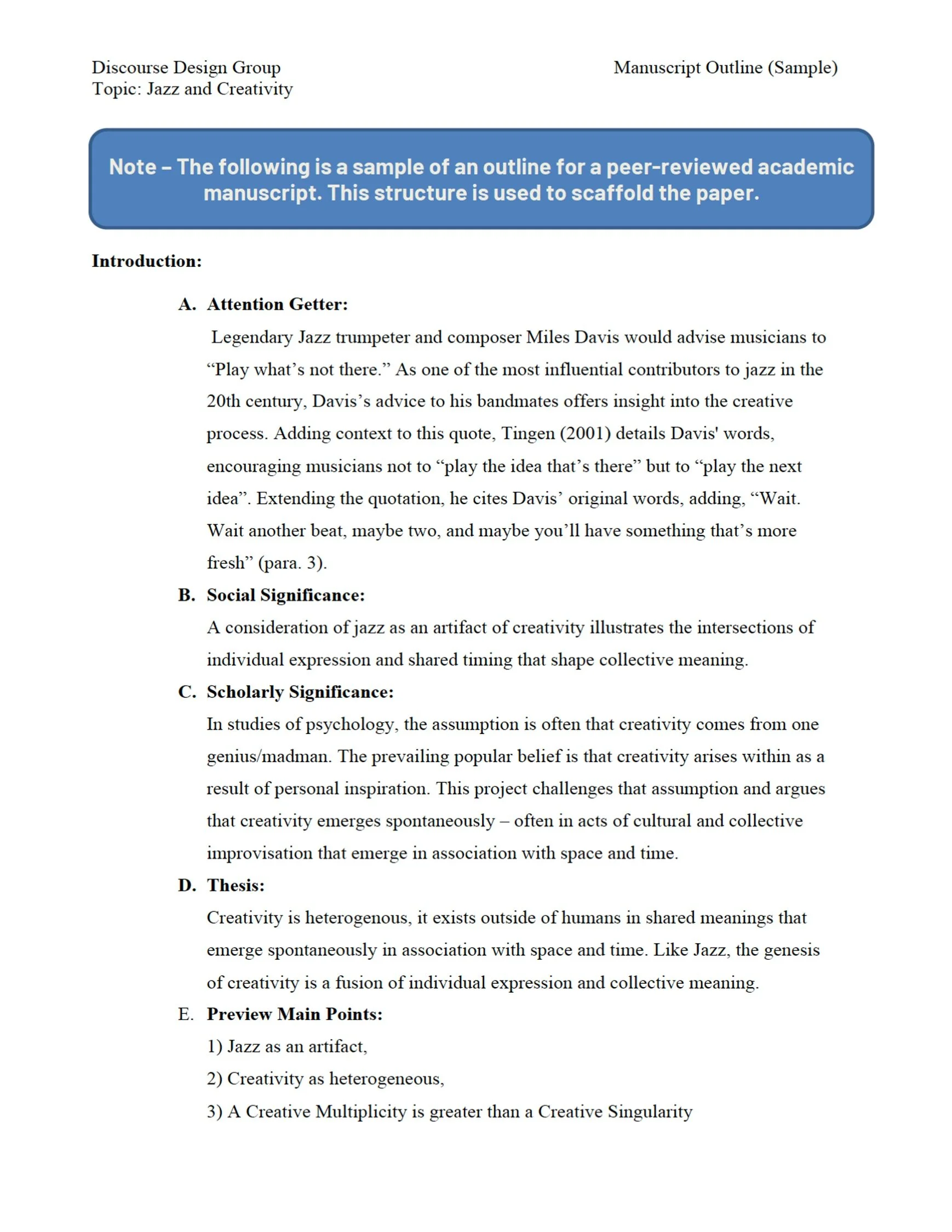A Recipe for Introductions in Scholarly Writing
Five sentences that every
introduction should have:
The introduction should be organized as a single section of text that addresses five needs for the reader. In some cases, these task needs may be accomplished in a single sentence. In other instances, an introduction task may require an entire paragraph.
An introduction should:
Capture the reader’s attention (often with a novel fact, a unique story, or a strong statement).
Express the social significance of your topic
Identify the scholarly significance of the topic
Provide a clear declarative thesis statement
Preview the main points with signposts
*Signposts serve to distinguish your main points and include terms like first, second, and third or phrases like “after discussing X,
we will next turn attention to Y.”
Consider the Following Outline of an Introduction
This serves to set up an academic paper about jazz and the psychology of creativity:
If you’d like to discuss ideas for your introduction - don’t hesitate to reach out at Philip.tschirhart@discoursedesigngroup.com
or connect with me on linkedin.com/in/philip-tschirhart/


